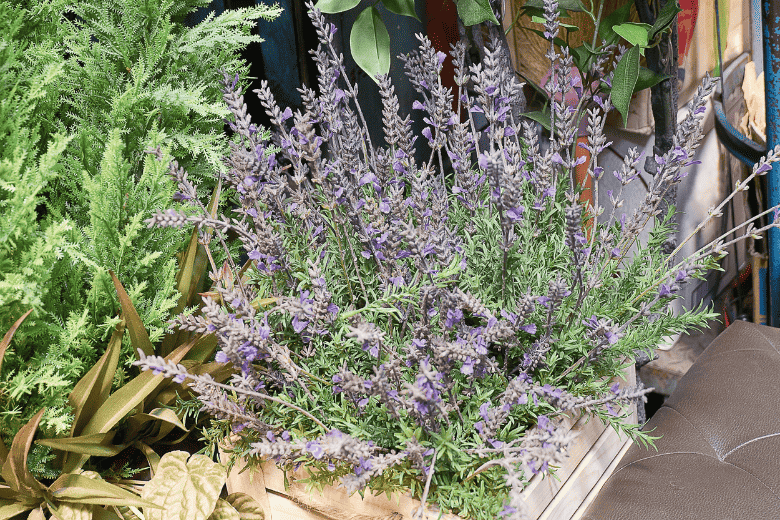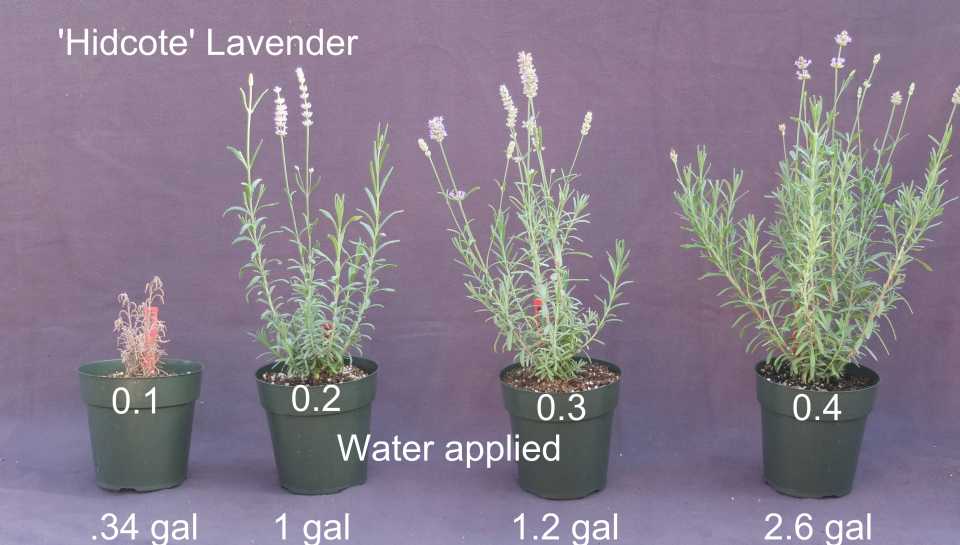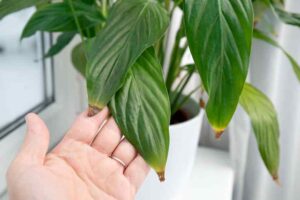
Do your lavender plants seem droopy or dull lately? Not sure if they need a drink? Use these simple visual cues to determine when it’s time to water your lavender. Checking your lavender’s water needs is easy once you know the key signs they’re thirsty.
Stick your finger in the soil, lift the pot, and examine the leaves – all will tell you clearly if your lavender plants need a refreshing drink of water. Read on for visual signs your lavender is dry and tips for proper watering to keep your plants healthy and vibrant.
Identifying Signs of Drought Stress in Lavender Plants
Here are some tips for telling if your lavender plant needs water:
- Check the soil. Stick your finger into the top 1-2 inches of soil. If it feels dry, it’s time to water. Lavender prefers the soil to dry out slightly between watering.
- Look at the leaves. When lavender is thirsty, the leaves will start to look wilted or droopy. They may also appear a duller green color.
- Lift the pot. If the pot feels significantly lighter than usual, it likely needs water as the soil has dried out.
- Check the drainage holes. If no water is dripping from the drainage holes after watering, the soil was too dry and the plant needs a thorough watering.
- Pay attention to the environment. Lavender needs less water in cooler, cloudy weather. Water more frequently if it’s hot, sunny, or very dry/arid outdoors.
- Consider the plant size. Newly potted or younger lavender plants will need water more often than established bushes.
- Go by the calendar. As a general guide, lavender typically needs water every 7-10 days in spring/summer or every 10-14 days in fall/winter. But always check the soil too.
The key is allowing the soil to dry out partially between watering. Overwatering can cause root rot, so allow visual cues to determine when to water.
Examining the Soil to Check for Moisture
Here are the steps to examining the soil to check for moisture and see if your lavender needs water:
1. Use your fingers to check the top 1-2 inches of soil. Gently insert your finger into the soil near the main stem or roots.
2. Feel the moisture level of the soil. Soil that is dry will feel loose, dry, and powdery. Moist soil will feel damp or even slightly moist.
3. Check several spots around the plant, not just one area. Soil moisture can vary in different parts of the pot.
4. If the soil feels dry, it’s a sign your lavender needs water. Dry soil is not able to provide moisture to the roots adequately.
5. If the soil still feels damp 1-2 inches down, it does not need water yet as there is still moisture available for the roots.
6. For an even more accurate check, you can remove a small amount of soil and squeeze it in your hand. Dry soil will not form a ball or stick together. Moist soil will stick slightly when compressed.
7. Make a habit of checking the soil moisture regularly, especially during hot or dry periods, to keep lavender well-watered but not overwatered.
Examine the soil moisture is the most reliable way to determine if your lavender plants need a drink of water to stay healthy. Be sure not to water again until the topsoil becomes dry.
Watering Techniques for Lavender Plants
Here are some effective watering techniques for lavender plants:
Technique 1: Thorough soaking: When the soil is dry, water deeply until water drains out the drainage holes. This saturates the entire root zone.
Technique 2:Use a hose or watering can with a narrow spout. Direct the water to the soil around the base of the plant, not the leaves or flowers.
Technique 3:For container plants, water until water flows through the drainage holes. This ensures the entire soil volume is moistened.
Technique 4:Early morning watering is best, allowing time to dry before nightfall to prevent disease. Avoid late evening watering.
Technique 5:Light, frequent watering can cause shallow roots. It’s better to water deeply but less often.
Technique 6:Mulch around the base with gravel or bark to retain moisture in the soil longer between watering.
Technique 7:Water the soil, not the foliage, to prevent leaf diseases. Water at the base of the plant, not from overhead.
Technique 8:During drought or heatwaves, water lavender more deeply and frequently to avoid wilting and damage.
Technique 9:In winter when plants are semi-dormant, water only when soil is completely dry to prevent root rot in cold, wet soil.
Proper watering keeps lavender hydrated but not overwatered. Thorough soakings followed by drying out periods is best. Adjust based on weather and container/soil type.

Fertilizing Lavender Plants
Lavender is one of the most popular plants in the garden, and it’s easy to see why. Its fragrant blooms, striking foliage, and versatility make it a great choice for any garden.
But to keep your lavender plants looking their best, they need to be fertilized regularly. Fertilizing lavender plants helps keep them healthy and strong, and it increases the number of blooms they produce.
The best type of fertilizer for lavender plants is one that is high in phosphorus and potassium, such as a slow-release fertilizer.
Additionally, it’s important to make sure that the fertilizer is watered in after application. With proper fertilization, your lavender plants will thrive and look their best!
Common Mistakes When Watering Lavender Plants
Here are some common mistakes people make when watering lavender plants:
1. Overwatering – This is one of the most common issues. Only water when the top 1-2 inches of soil are dry. Overwatered soil stays constantly moist and can cause root rot.
2. Inconsistent watering – Some areas are saturated while others remain dry. Make sure to water thoroughly until the entire root zone is moistened.
3. Infrequent deep watering – Lighter, more frequent watering leads to shallow roots that dry out quickly. Water thoroughly and less often.
4. Failure to check soil moisture – Relying on calendars/schedules rather than checking the soil leads to over or under watering. Always check soil before watering.
5. Watering foliage – Directing water onto leaves and flowers spreads disease. Water at the root zone around the base of the plant.
6. Watering at wrong times – Evening waterings raise humidity and promote fungal issues. Water early in the day.
7. Not adjusting for weather/conditions – Lavender needs less water in cooler/cloudy weather and more in heat waves. Adjust based on temperature.
8. Incorrect container drainage – Standing water can suffocate roots if containers do not have holes. Use containers with drainage.
9. Inconsistent drainage – Not emptying saucers after watering allows excess moisture to collect in the soil.
Proper watering techniques and avoiding common errors keep lavender healthy through easy moisture monitoring.
Troubleshooting Tips for Lavender that Needs Watering
First, make sure you’re not overwatering your lavender. Lavender does best when the soil is slightly dry and well-drained.
Secondly, try using a liquid fertilizer every two weeks to help your lavender reach its full potential.
Lastly, while lavender likes lots of sun, make sure to provide some shade during the hottest times of the day. With these tips in mind, you can be sure to have a vibrant and healthy lavender garden in no time.
FAQs About the How To Tell If Lavender Needs Water
When should I water my lavender plant?
Answer: Lavender plants need to be watered regularly, but the frequency will depend on the size of the plant, the temperature, and the humidity in your home. In general, water your lavender when the top of the soil feels dry to the touch.
How can I tell when my lavender plant needs water?
Answer: If the top of the soil is dry, your lavender needs water. You can also check the leaves of the plant to see if they are wilting. If they are, it’s time to give your lavender some water.
How much water should I give to my lavender?
Answer: You should aim to give your lavender enough water so that the soil is moist, but not soggy. Overwatering can cause root rot, so make sure to check the soil often and give your lavender enough water, but not too much.
Conclusion
Overall, it is important to know how to tell if your lavender needs water so that it can properly thrive. By properly inspecting the soil and foliage of the plant, you will be able to determine if your lavender needs water. If the soil is dry or if the foliage is wilting, then your lavender needs water. Watering your lavender regularly and evenly will ensure that your lavender remains healthy and happy.








One Comment